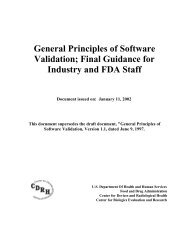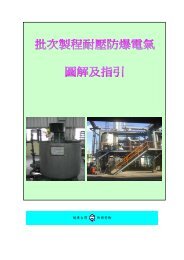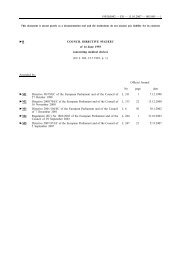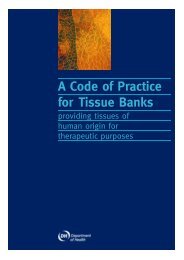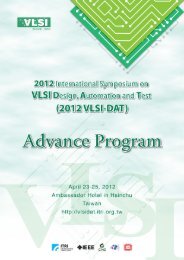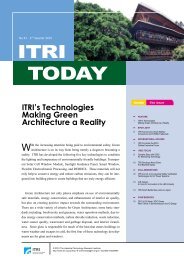Design Control Guidance - Food and Drug Administration
Design Control Guidance - Food and Drug Administration
Design Control Guidance - Food and Drug Administration
Create successful ePaper yourself
Turn your PDF publications into a flip-book with our unique Google optimized e-Paper software.
CONCURRENT ENGINEERING. Although the waterfall model is a useful tool forintroducing design controls, its usefulness in practice is limited. The model does apply tothe development of some simpler devices. However, for more complex devices, aconcurrent engineering model is more representative of the design processes in use in theindustry.In a traditional waterfall development scenario, the engineering department completes theproduct design <strong>and</strong> formally transfers the design to production. Subsequently, otherdepartments or organizations develop processes to manufacture <strong>and</strong> service the product.Historically, there has frequently been a divergence between the intent of the designer <strong>and</strong>the reality of the factory floor, resulting in such undesirable outcomes as lowmanufacturing yields, rework or redesign of the product, or unexpectedly high cost toservice the product.One benefit of concurrent engineering is the involvement of production <strong>and</strong> servicepersonnel throughout the design process, assuring the mutual optimization of thecharacteristics of a device <strong>and</strong> its related processes. While the primary motivations ofconcurrent engineering are shorter development time <strong>and</strong> reduced production cost, thepractical result is often improved product quality.Concurrent engineering encompasses a range of practices <strong>and</strong> techniques. From a designcontrol st<strong>and</strong>point, it is sufficient to note that concurrent engineering may blur the linebetween development <strong>and</strong> production. On the one h<strong>and</strong>, the concurrent engineeringmodel properly emphasizes that the development of production processes is a designrather than a manufacturing activity. On the other h<strong>and</strong>, various components of a designmay enter production before the design as a whole has been approved. Thus, concurrentengineering <strong>and</strong> other more complex models of development usually require acomprehensive matrix of reviews <strong>and</strong> approvals to ensure that each component <strong>and</strong>process design is validated prior to entering production, <strong>and</strong> the product as a whole isvalidated prior to design release.RISK MANAGEMENT AND DESIGN CONTROLS. Risk management is thesystematic application of management policies, procedures, <strong>and</strong> practices to the tasks ofidentifying, analyzing, controlling, <strong>and</strong> monitoring risk. It is intended to be a frameworkwithin which experience, insight, <strong>and</strong> judgment are applied to successfully manage risk. Itis included in this guidance because of its effect on the design process.Risk management begins with the development of the design input requirements. As thedesign evolves, new risks may become evident. To systematically identify <strong>and</strong>, whennecessary, reduce these risks, the risk management process is integrated into the designprocess. In this way, unacceptable risks can be identified <strong>and</strong> managed earlier in thedesign process when changes are easier to make <strong>and</strong> less costly.An example of this is an exposure control system for a general purpose x-ray system. Thecontrol function was allocated to software. Late in the development process, risk analysisof the system uncovered several failure modes that could result in overexposure to theIntroduction 3/11/97 Page 5



